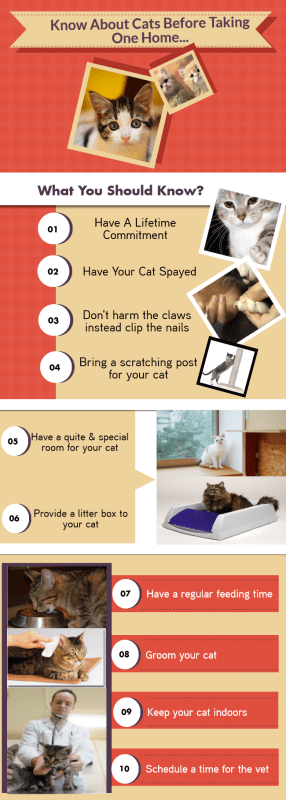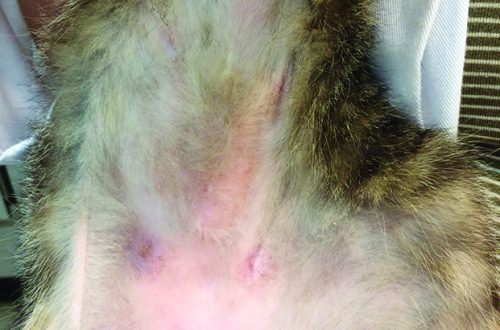
Overexposure of cats at home: what is important to know
Fiona Branton, who has long been a home caregiver, says: “Go for it!” Her first ward was a pregnant cat, which she adopted in 2006. When the kittens were born to the cat, Fiona realized that she did not want to stop there. “She had six kittens and they were all just adorable,” says Fiona. “It was so much fun.” How to organize temporary overexposure of cats and is it worth it?
Contents
Why do shelters give away a cat for foster care?
In the years since that cat mom and kittens arrived at the Branton home, she has adopted dozens of cats in Erie, Pennsylvania. Some stayed with her for just a few weeks, while others for years.
“Most shelters use a home care service to temporarily take in at least some cats,” says Branton, who is now chairman of the board of directors for Because You Care, Inc. (BYC). This company rescues, treats and houses homeless and abandoned pets in Erie. BYC is unique in that before finding a permanent home, each pet that enters the shelter is temporarily placed in a volunteer family for overexposure.
Employees of the organization found that the home overexposure of cats from a shelter allows you to better assess their character, habits and health. This allows BYC employees to subsequently place animals in the most suitable homes for them.

How to adopt a cat
If a person wants to arrange for cat care at home, the shelter must first approve him as a volunteer to provide such services. To do this, you need to fill out a number of documents and, possibly, undergo training and background checks. The shelter worker may even visit the prospective helper’s home to make sure they have enough space to temporarily house the pet.
When checking, they usually pay attention to the following:
- Are there other pets in the house? If yes, they should be vaccinated in accordance with the preventive vaccination schedule. Their character should be conducive to the appearance of another pet in the house.
- Is there a separate room in the house? where a new cat can be kept separately for the first time. It is important to have a safe space where new adopted cats can be isolated from other pets for the first time if the new furry friend is not vaccinated, is under stress that results in destructive behavior, or just needs a place to be alone.
- How other family members feel about the idea of overexposure of cats. It is necessary that all household members be ready to take care of a new pet, even if it is temporary.
- Does the volunteer have enough time to keep the cat for a while. The pet needs socialization, so you will often have to be at home to communicate with the animal.
- Do you have the patience to care for an overexposure cat? Families taking animals for overexposure should understand that among the pets there are those who have not been taught not to scratch furniture and not to jump on the table. Some cats will mark in the house, hide from people, or scratch when you try to pet them. Will the volunteer have the patience and compassion to deal with such behavioral problems of the wards?
Cat Care Services: What to Ask Before You Make a Decision
Before becoming a volunteer, the shelter can clarify the following questions:
- Does the shelter provide food, litter box and pay for medical care?
- Does the shelter have a veterinarian they work with?
- What exactly needs to be done: will you have to invite potential owners to your home or take the cat to animal housing shows?
- Is it possible to ask a shelter to take a cat if the volunteer fails to become a good friend to her?
- Will it be possible to choose cats or kittens for overexposure at home?
- Will it be possible to keep the cat if such a desire arises?
The answers to these questions may vary, depending on the shelter’s policies. It is necessary to make sure that the conditions for overexposure of cats are suitable for the future volunteer.

Leave the cat for overexposure: what you may need
Before taking cats for home overexposure, you need to think about whether the household has everything you need to care for them. The shelter can provide some of the following items:
- Carrying: You may need to take your cat to the vet or to pet shows.
- High quality food: Choose a wet and/or dry food that is appropriate for the age and health of the cat, taking into account any problems it may have.
- Tray and filler: If there is a mother cat with kittens left for overexposure, a tray with low sides is best, since the legs of the kittens are still too short for a closed tray or a tray with high sides.
- Toys: The main purpose of overexposure is to socialize the cat, so games are very important.
- Claw: It is necessary to provide a place for the adopted pet to scratch its claws – this is a natural habit of all cats, which should be encouraged in the right places.
Bowls – Each pet should have its own bowls for food and water.
Overexposure of cats with honey. leaving
The length of stay for cats will depend on several factors. Brenton says that healthy cats usually stay with her for only a few weeks, while cats with special needs can live in her house for years. She recently adopted a cat with feline immunodeficiency virus (FIV) and believes he will stay with her for the rest of his life. His former owners moved to live in another place, leaving the pet to its fate.
“This is an elderly cat, he is missing one eye, and it is very difficult for him to eat,” she says. “So at the moment it’s mostly my cat, which I take care of like in a hospice.”
The ASPCA calls this type of care ‘hospice’. An animal is taken for overexposure that needs a permanent home, but is unlikely to find one due to its advanced age, illness, or behavioral quirks.
“This program implies that a person will open the doors of their home and their heart to animals that are not medically healthy enough to be taken from a shelter into a permanent family, but nevertheless need a warm and loving home environment where they can live your golden years with proper treatment,” writes the ASPCA. If a volunteer volunteers to care for a pet with a disease such as FIV, many shelters will teach you how to administer medication or how to prepare easy-to-eat meals.
Long-term overexposure of cats: is it difficult to say goodbye
According to Branton, the hardest thing about fostering is saying goodbye to a cat when it leaves for a new home.
“When you take care of animals, you get a lot of returns,” she says. “But it tastes bittersweet because you are saying goodbye to the wonderful animal you gave your heart to.” At these moments, you need to remember that you are just making room for another in need. At the same time, you need to prepare the cat for living in a permanent family, teaching her the skills of socialization and kindness, which she will take with her.
“If you’re really not ready to part with a cat, the shelter will likely let you keep it for good,” Branton says.
“It happens quite often,” she laughs. “A person just falls in love with a cat and it stays.”
Branton herself kept several cats, which she originally had in foster care.
“They win your heart,” she says. “And you understand that they ended up exactly where they were supposed to be.”
See also:
What you need to know when you adopt a cat from a shelter Why are kittens and cats returned to a shelter? Why you should adopt a cat from a shelter How to adopt a cat from a shelter in Russia





